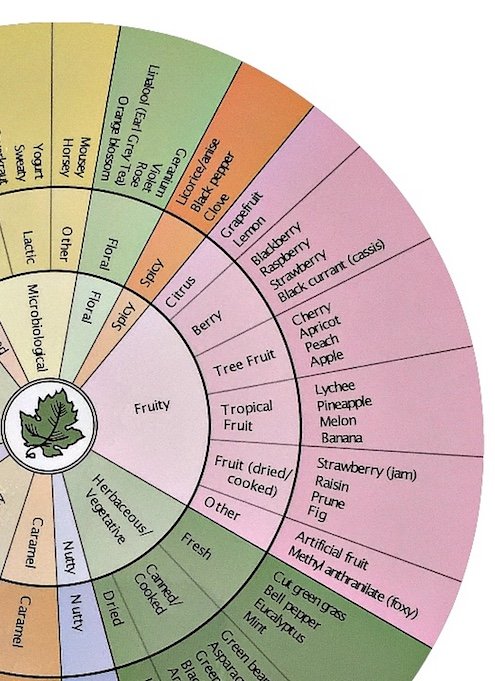A Note on the Aroma Wheel
So you’re starting to learn about drinks now and that’s pretty cool.
To me, learning about drinks is first and foremost learning about taste. Luckily for you Burum has had some very brilliant people talking to you about how you taste beer, wine and cider. But these very brilliant people will only be able to get you so far if you don’t learn to trust yourself along the way.
A common tool in getting a grip on your tastebuds is the aroma wheel. Split into sections and listing off numerous tastes it provides a glossary of descriptors you may be able to find in your glass. It’s a tool that is very often taken for granted, but where did it come from?
The Beer Flavour Wheel was invented in the 1970s by Danish brewing chemist Dr Morten Meilgaard. Across the Atlantic and about a decade later Dr Ann C Noble invented the Wine Aroma Wheel during her time at the University of California. Frustrated at ambiguous language and fanciful terms Ann and her team designed the aroma wheel to be a visual element to help the wine novice describe what they were drinking in a more scientific, analytical manner. Cider has interpretations of an aroma wheel, but not an official one; although as you’ll go on to see, this is not necessarily a bad thing.
Fantastic as these inventions are and as influential as they have been on tasting notes since, there is one common downfall to both Noble’s and Meilgaard’s creations. The pair approached their aroma wheels from a white, higher educated and Americanised/European framework respectively and with that comes limitations.
Something you’ll see us banging on about a lot over at BCHQ is that taste is subjective. Whilst aroma wheels may be good prompts for those new to tasting they don’t take subjectivity into account. Not just that, their creators assume that all those who access them have the same access to the foods that they do. Aroma wheels do not accommodate for the fact that taste, language and culinary experiences differ across race, class and religion. They don’t acknowledge the social economic barriers in place that can restrict access and familiarity to fresh fruits and vegetables. It doesn’t take into account that a lemon brought from a UK supermarket will differ vastly in taste to that brought from a market in Iran where they are commonly grown. To put it simply, one person’s black cherry is very rarely anothers.
So, instead of providing you with an established Arome Wheel, or creating a Burum wheel that would just be a reflection of what myself and Helen are familiar with, we’ve created a blank one, one for you to personalise instead. You can do this by yourself, with the aid of aroma wheels we’ve linked to in this piece, picking out and adding to what it is you know and making note of what you don’t or you could do this with a group of friends and pool your tastebuds together. The only person who can tell you what you taste is you, no one else gets to decide your aromas for you. If anyone tries to, send them my way.
As you progress through your journeys into the world of cider, wine and beer it’s important to remember that the vast majority of information out there is written from a white, European inspired and financially stable perspective. The ideas people have are formed, and ultimately limited, by the culture in which they live and aroma wheels are no exception.
Don’t let the limitations of those who haven’t thought broadly enough dictate what you can and cannot experience.

